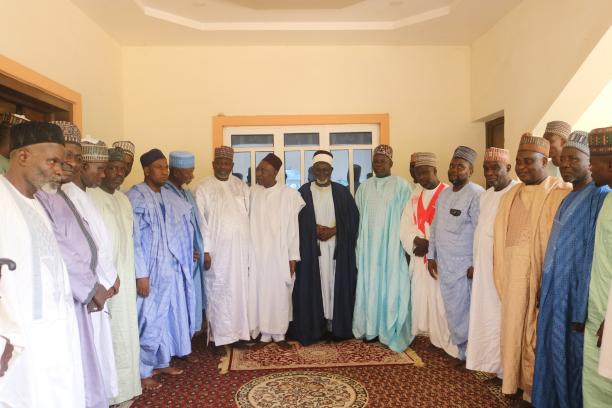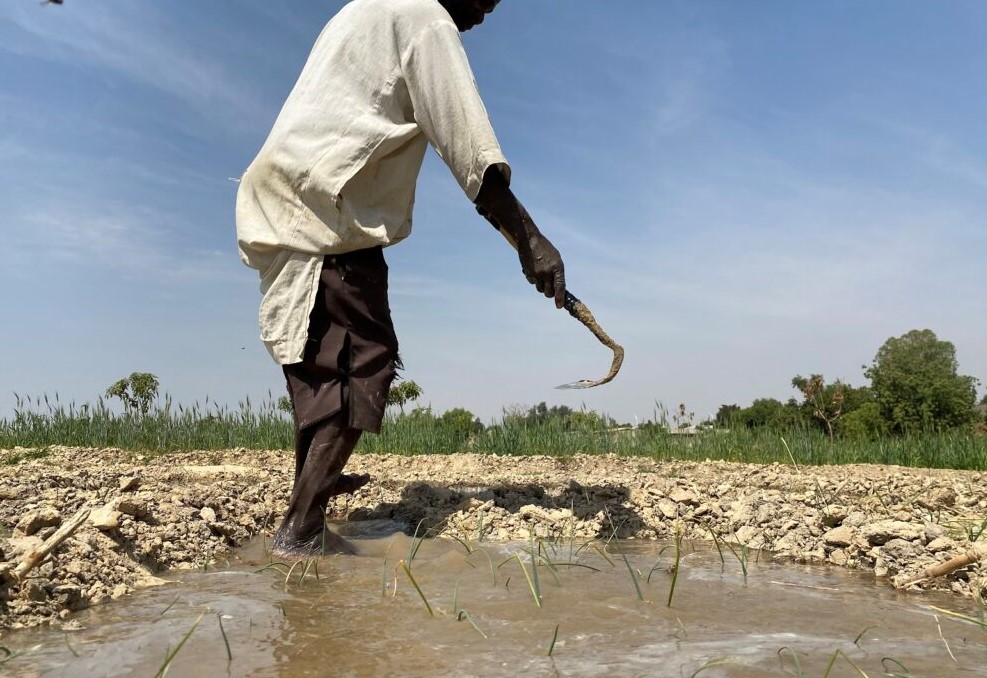ABOUT YOBE STATE

Brief History of Yobe State
Yobe State is among the 36 states of Nigeria and covers 47,153 km2 is Latitude 10.578- 13.3770N and Longitude 9.654-12.6890E. Yobe State’s population was 2,321,339 million at the last (2006) census. In the study area, desertification and drought are the main environmental issues, and the region has long dry seasons, recurrent drought, skeletal soil, and sparse vegetation cover. Yobe State shares boundaries from the west with Jigawa and Bauchi States, Gombe and Borno States to the southeast, and an international boundary of 323 km with the Niger Republic to the north. Yobe State has 17 Local Government Areas (LGAs) distributed within three geographic regions (South, East, and North). The LGAs are Bade, Bursari, Damaturu, Fika, Fune, Geidam, Gulani, Jakusko, Karasuwa, Nangere, Nguru, Potiskum, Tarmuwa, Yunusari, Gujba, Machina and Yusufari
Climate and Vegetation

Yobe State is situated in the sudano-sahelian vegetation zone of the country, which is characterized by a hot and dry climate for the most part of the year. The hottest months of the year in the state are March to May, with temperatures ranging from 39 – 440C. In contrast to the thick vegetation forest of the coastal states in Nigeria, the vegetation of Yobe State is generally Savannah Grassland. Grasses, sparse dwarf trees, and shrubs are the most common features of the state. Yobe State has a wide range of climate variations. It has both warm and cool days in the rainy season. The state is heavily influenced by the relatively stable tropical continental air mass from the Sahara Desert, bringing the dusty northeast winds (also known as Harmattan). The dryness lasts seven months with severe cold and hazy harmattan wind from the Sahara Desert around November and lasts until February. The hot climate sets in around March and lasts till around May/June when the rains set in. The rainy season is usually short, not exceeding 3 – 4 months. The mean annual rainfall for the state is between 180 mm and 240 mm in the southern and northern 180 and 185mm parts of the state, respectively. The mean annual rainfall can be erratic and epileptic, resulting in frequent droughts. The state has thus been witnessing periodic occurrences of intense drought since the 1950s, which have remained persistent since the 1960s.
Desertification and drought are currently the major environmental problems affecting the state due to its location in the Sudan-Sahelian region that constitutes the dry lands of the country. In 1999, UNCCD estimated that the country lost about US$5.11 billion to environmental degradation and desertification. The North East region to which Yobe State belongs accounts for 73% of this annual loss. Human activities and animal grazing (a major source of household wealth and income) worsen the desert encroachment. Yobe State government supports tree planting campaigns to check desert encroachment particularly at the northern margins of the state.

Culture
By 2006 National Population census, Yobe has a total population figure of about 2,321,591 million. This is made up of 1,206,003 Males and 1,115,588 Females. However, given its high population growth rate estimated at about 3.2% per annum, the population of the state is expected to rise to about 3.1 million in 2015. Children under the age of 5 constitute about 20% of the population suggesting that the state needs to take urgent steps to grow the economy and invest heavily in social and physical infrastructure to sustain even the current standard of living of the population.
The state is multi-ethnic, with Kanuri, Bade, Fulani, Ngizim, Bolawa, Kare, Ngamo, Babur/Maga and Hausa constituting the main ethnic groups in the state. Hausa is the widely spoken language in the state. English is the official language of communication in schools and official functions. The combination of all these features creates a state that is diverse in culture and ethnic composition. The most colourful celebrations in the state are the annual fishing festival popularly known as the Bade Fishing Festival, Machina annual Cultural Festival, Barakau Festival, Durbars and installation ceremonies, which attracts local and international tourists. The fishing festival also makes significant contribution to economic activities of the state.
The Economy
Though, Yobe State is a rural state without a single cosmopolitan city and only five medium-sized towns with significant commercial activities, the state is endowed with agricultural and mineral resources that are yet to be efficiently exploited. The state’s economy is therefore relatively small when compared to big state’s, such as Lagos, Kano and Borno in Nigeria. The Gross State Product (GSP), which measures the output of annual economic activities in the state, was estimated to be about N60.57 billion in 2005. The per capita GSP was equally estimated to be about US$222.99 compared to the national average for the same year put at US$887.63. Yobe’s economy makes contributes of about 0.42% to the national Gross Domestic Product (GDP). The economy of the state is driven by agriculture. Yobe State is agrarian with more than 80% of the citizens engaged in small-scale subsistence farming.
Food crops such as millet, sorghum, beans, and maize are grown by small-scale farmers to generate household income. Cash crops that are commonly grown by peasant farmers in the state include groundnut, sesame seed, cotton, and Benny seed. In the past these crops were exported to earn foreign exchange. Local industrialists also used them as raw materials. Tree crops such as shear butter, Gum Arabic that has potentials for export are also being produced in the state. The state is also noted to be the largest producer of Gum Arabic in Nigeria. A significant proportion of the population is pastoralists rearing livestock such as cattle, sheep, goats, donkeys and horses at commercial level.
The state has some of the largest cattle markets in West Africa. It supplies meat, hides and skin particularly to the southern parts of the country. Thus, the state has the potentials to be not only an agricultural base of the country but also a net foreign exchange earner. Yet, a lot needs to be done in terms of agricultural investments to realize these potentials. The major business centres in the state include Potiskum, Nguru, Gashua, Geidam and Damaturu. However, informal trading flourishes among communities in the state.

Human Development Indicators
From this perspective the National Bureau of Statistics (NBS) estimates that about 54.7% of Nigerians were living in absolute poverty in 2004. The World Bank 2007 Poverty Assessment of Nigeria highlights that poverty is higher in rural areas (63.8%) than urban areas (43.1%). It is estimated that if no dramatic changes takes place, by 2011, 89 million Nigerians will be living below the basic requirement of equivalent of US$1 per day. By the same token and assuming that the poverty incidence in Yobe State was 78% as estimated from the Nigerian Living Standard Survey (2004) and also given Yobe’s population of 2.3 million in 2006 with a growth rate of about 3%, it would mean that about 2.1 million of Yobe’s projected population of 3.7 million people in 2015 will be living in poverty. Yobe Socio Economic Reform Agenda (YOSERA) IV is about how to effectively mobilize and apply available scarce resources not only to stop more people falling into poverty but to provide the needed economic and social structures to help as many as possible overcome precedence of poverty.
